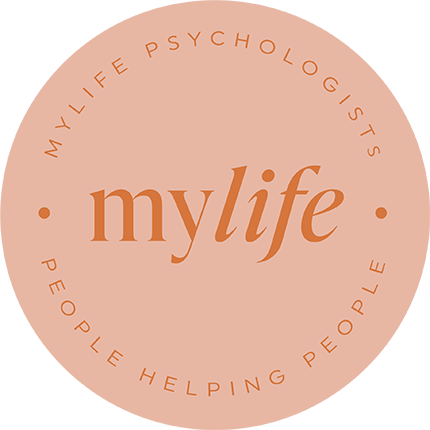Schemas Therapy Can Address Unmet Emotional Needs
Dysfunctional beliefs and patterns of behaviour – termed schema – can affect people throughout life, contributing to problematic coping methods and modes of behaviours. The primary benefit of Schema Therapy is its ability to 1) help people identify and adjust their negative patterns of behaviour and 2) learn how to ensure their emotional needs are met, in a healthy way.
There are four elements to the Schema Therapy model: emotional needs, schemas, coping styles and modes. The logic behind this form of psychological therapy is that patterns of dysfunctional adult behaviour are the result of beliefs based on problematic childhood experiences and unmet emotional needs.
Unmet Emotional Needs
For a child or adolescent to grow and develop into a happy and healthy adult, many emotional needs to be met. When a child or adolescent’s basic needs – for shelter and safety, love and affection, guidance and acceptance – go unmet, as adults, they may continue to lack the ability to meet their emotional needs, themselves and in relationship to others.
Early Maladaptive Schemas
Early maladaptive schemas are broad pervasive patterns of beliefs about yourself and your relationship with others, formed through negative childhood experience wherein your basic emotional needs (as a child) are not provided for. Schemas develop in childhood and adolescence as a response (dependent on temperament) to ongoing and damaging experiences with parents, siblings, or peers.
Because schema development begins early in life, they become familiar and comfortable ways of being. Although developed through an immature perspective of the world, schemas often continue into adult life. And although negative beliefs can lead to significant dysfunction, our schemas are often rigid and represent beliefs that, even once adult, we continue to accept without question.
Experts have identified 18 distinct schemas – self-defeating, core themes or patterns that we keep repeating throughout our lives. These fall into one of five schema domains.
| Domain | Description | Typical Behaviour |
|---|---|---|
| I | Disconnection & Rejection | Difficulty developing healthy relationships |
| II | Impaired Autonomy & Performance | Difficulty developing a strong sense of self & function in the world as an adult |
| III | Impaired Limits | Lack of self-control & respect for boundaries and limits |
| IV | Other Directedness | Prioritise others needs above their own |
| V | Over vigilance & Inhibition | Prioritise avoiding failure or mistakes through alertness, rules w. little regard to emotion and feelings |
Table 1: Five Domains of Psychological Schema as applied to Schema Therapy
Three Maladaptive Coping Styles
Inevitably our maladaptive schemas produce maladaptive coping styles – thoughts, feelings, or behaviours – that the child internalises as a way of avoiding the painful and overwhelming emotions experienced.
And while coping styles can be helpful in childhood by providing a means of survival (think of the child hiding from a drunk and abusive parent) in adulthood, they can reinforce schemas and help to perpetuate patterns of negative thoughts and feelings. People will present with one or more of the following three maladaptive coping styles.
- Avoidance: means you will work to avoid activities or situations that may make you feel vulnerable.
- Overcompensation: is an attempt to fight a schema by acting in complete opposition to it. The problem being that overcompensation often leads to aggressive, demanding, insensitive, or excessive behaviour.
- Surrender: usually results in behaviour that reinforces or continues the schema pattern. For example, if you surrender to a schema that formed as a result of emotional abuse as a child, you may repeatedly find yourself in emotionally abusive adult relationships.
Four Schema Modes
In Schema Therapy, a mode is a temporary mindset. It is a combination of both the schema and coping styles and most often triggered by life situations that we are oversensitive to. While modes of behaviour can be helpful (adaptive) it is the unhelpful modes (maladaptive) that can lead us to behave in ways that end up hurting ourselves or others. Schema modes are divided into four categories:
- Child Mode: characterised by childlike thought, feelings and behaviours. For example, a child lacking the maturity to understand natural emotion and sense of loss and associated with the death of a loved one may develop an abandonment schema founded on the belief that “people I love will leave me”
- Dysfunctional Coping Mode: although employed to prevent emotional distress the reinforce the troubling schema. Alcohol, food and drugs are common examples of coping mechanisms used to distract and numb feelings that people do not wish to deal with.
- Dysfunctional Parent Modes: represents the internalisations of harsh, critical or demanding parental voices. We can probably all think of an example of a parents remark that remains with us into adulthood, but it is how we cope with that information today that determines whether it may be dysfunctional.
- Healthy Adult Mode: Your healthy, functional self can help regulate the other modes through positive self-reinforcement, for example.
How does Schema Therapy work?
Schema Therapy assists people to:-
- identify schemas, coping styles and modes of behaviour that get in the way of emotional needs
- change their patterns of feelings and behaviours
- address unmet emotional needs, in a healthy, adaptive and constructive way
- learn how to cope with frustration and distress when certain needs are not able to be met
To achieve these outcomes Schema Therapy looks at core themes within a person’s life to help them break negative, rigid and unhelpful patterns of thinking and feeling and to address problematic behaviour and mental health conditions. It incorporates elements from several other therapeutic frameworks, including Cognitive Behavioural Therapy, Psychoanalytic Therapy, Attachment Theory and Gestalt Therapy.
As an interactive therapeutic approach, Schema Therapy utilises a range of techniques to help people navigate relationships with ourselves and others. The therapist and client work together to build a supportive and trusting therapeutic relationship to create a safe environment for therapy to take place.
When presented with a client with behavioural problems, therapists can apply schema therapy to understand how behaviours develop and what unmet needs they represent. The process encourages people to think back and connect dysfunctional schema with the experiences upon which they are founded and having identified the formative experience, try to mitigate the power of that original learning.
A person’s schemas and unhelpful patterns develop over the course of their life so for this reason, Schema Therapy is a longer-term treatment option (15 or more sessions), as it focuses on the core dysfunctional themes in a person’s life as well as symptom reduction. Through schema therapy, people may develop a greater sense of self-worth and become more able to develop nurturing healthy adult relationships.
Who can benefit from Schema Therapy?
Studies show Schema Therapy is effective for people diagnosed or presenting with features of personality disorders. It can help people with childhood traumas, eating disorders and addictions, to identify and address the underlying schemas from which issues arise. Studies show this type of therapy is often effective in addressing:
- Anxiety
- Chronic depression
- Criminal behaviour
- Eating disorders
- Personality-related conditions
- Post Traumatic Stress
- Relationship issues
- Substance abuse
Here at MyLife Psychologists many of our highly qualified Sydney psychologists are trained Schema Therapists. We enjoy working collaboratively with clients using this approach so for more information or to book an appointment, please contact our team.
Source References:
http://www.schematherapy.com/
https://www.goodtherapy.org/learn-about-therapy/types/schema-therapy
https://www.mentalhealthtoday.co.uk/news/therapy/what-is-the-benefit-of-schema-therapy-for-young-people-interview-with-ruth-holt
https://www.healthline.com/health/schema-therapy-2








